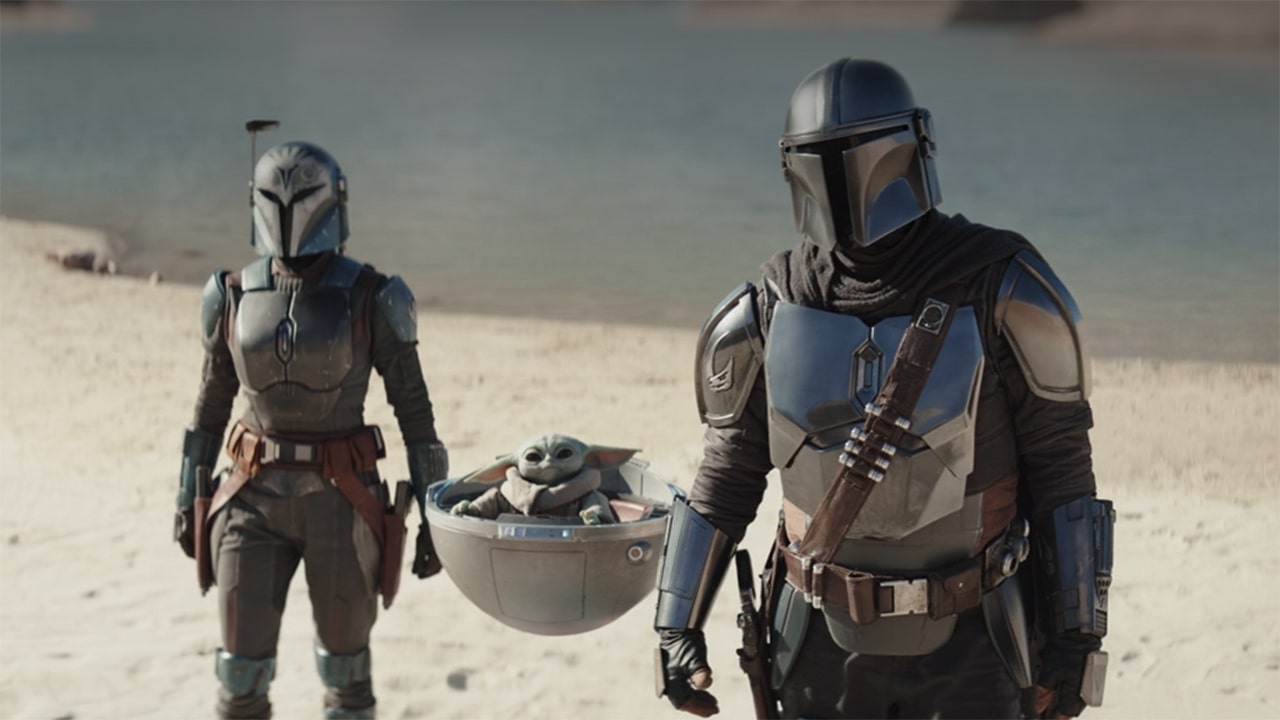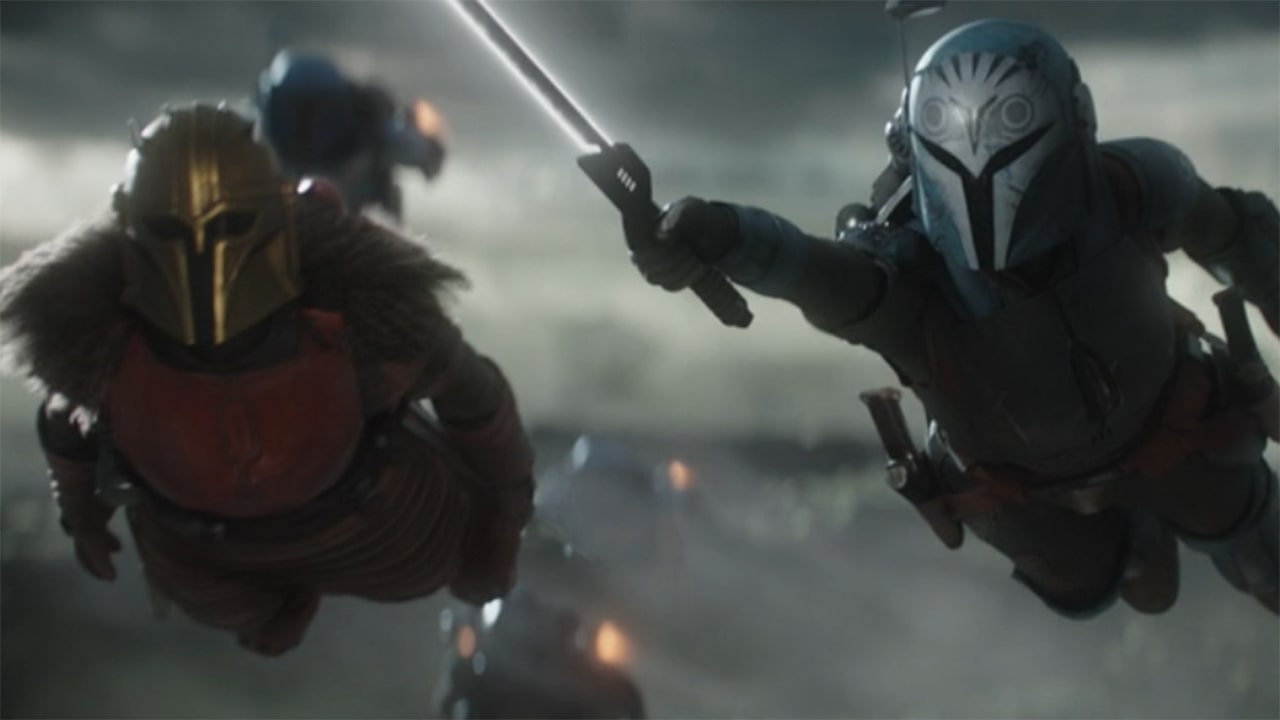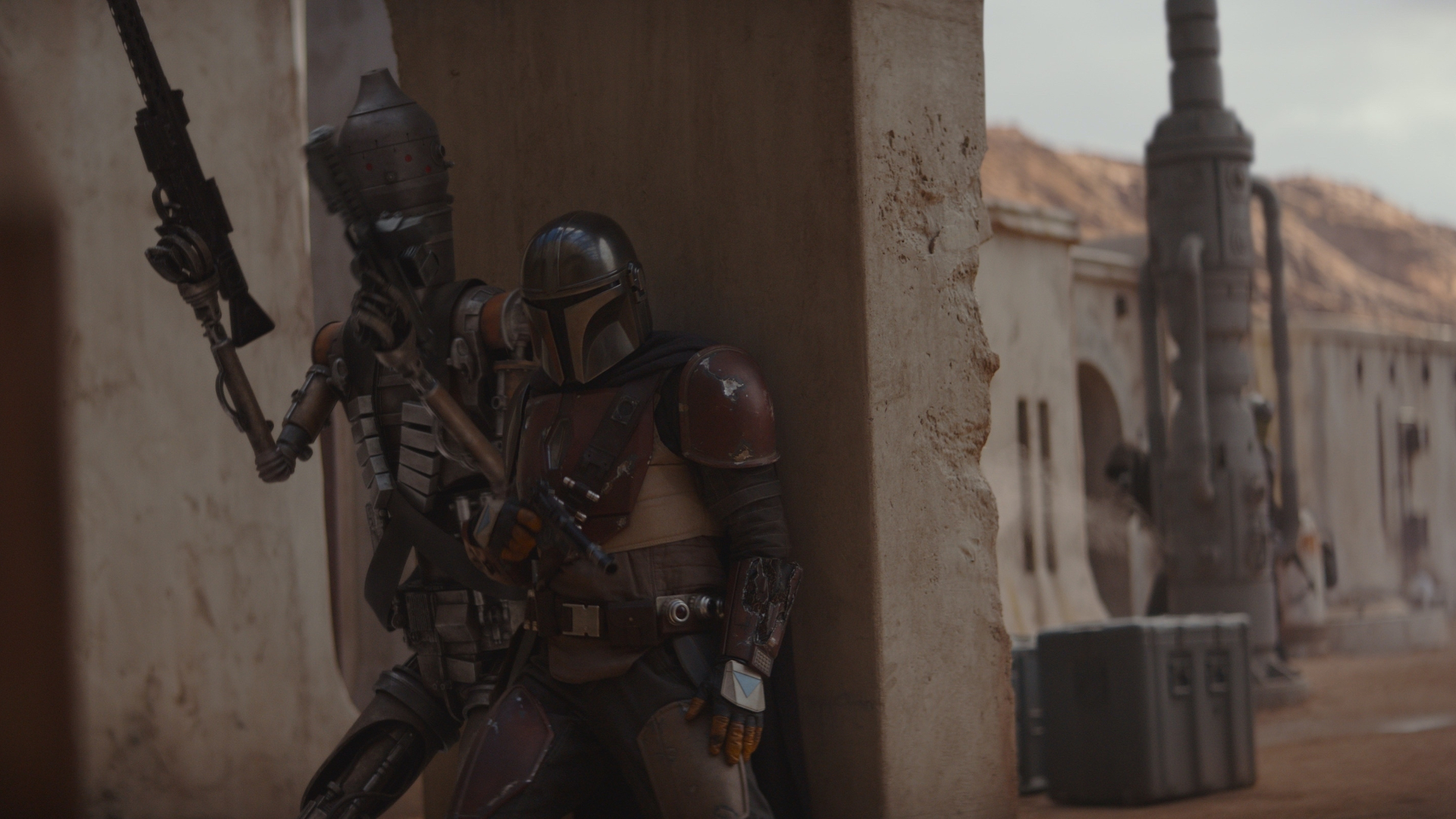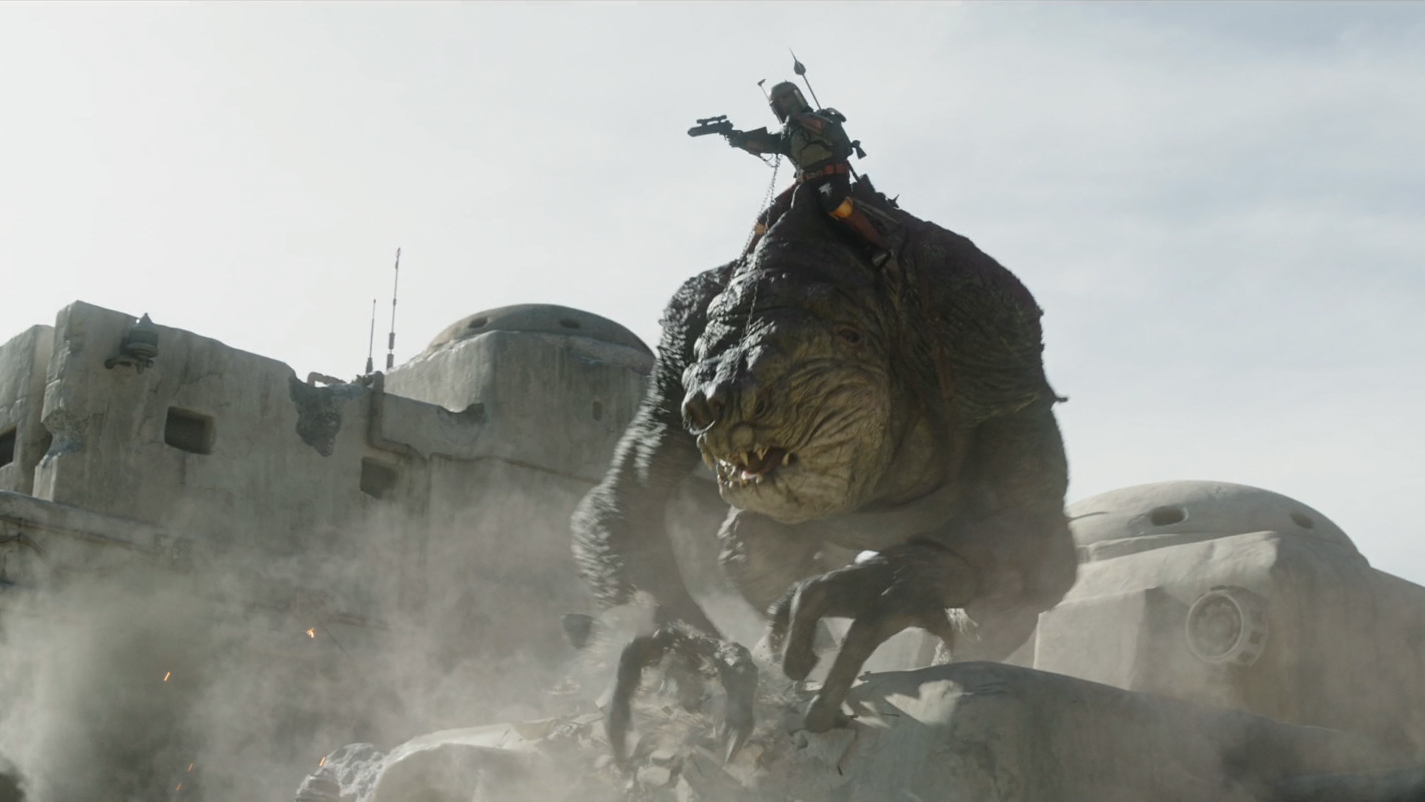
When James Cameron was pitching his vision for Aliens, many believed that making a follow-up to Ridley Scott’s genre-defining sci-fi horror was the quintessential no-win scenario. The Terminator director didn't share their doubts. He was so confident, in fact, that he made his point to studio executives in characteristically bombastic style, writing ALIEN on the back of his script, before adding an S and drawing a couple of lines through it to turn it into a dollar sign.
Whether ALIEN$ was the reason the suits gave the iconic sequel the green light is lost to history, but there's no question Cameron lived up to his self-generated hype – not only did he pluralize the xenomorph threat from the original film, he also delivered healthy returns at the box office.
Why mention Cameron's stunt here? The recent third season of The Mandalorian seems to have taken a leaf out of the same notebook. From the increased scale of the storytelling to armies of warriors in familiar Mando battle armor, it feels like THE MANDALORIAN$ could have been a buzz phrase in the writer's room. But, in stark contrast to Aliens, going large hasn't necessarily been a recipe for success. Instead, this was the point where the show forgot why we fell in love with it in the first place.

As the first ever live-action Star Wars TV series, there was a lot riding on The Mandalorian when it launched in November 2019 – for both the franchise and the fledgling Disney Plus platform. But, after the divisive The Last Jedi and Solo: A Star Wars Story – and the even more divisive The Rise of Skywalker that would debut the following month – this show had the power to bring balance to the fanbase.
All anyone knew about the show's eponymous bounty hunting antihero was that he dressed a bit like Boba Fett, and wasn't particularly fussed whether he brought his targets in warm or cold. He operated in a time period previously unexplored by the franchise, five years after the destruction of the second Death in Return of the Jedi. His show also existed on the periphery of that famous galaxy far, far away, parsecs from any of the characters we’d met before – if there really is a bright center to the universe, as Luke Skywalker once pondered, The Mandalorian inhabited the planets it was farthest from.
Although the nostalgia was less on-the-nose than the A New Hope tribute act of The Force Awakens, long-standing fans could embrace a space Western vibe that harked back to the original movie. The nods to what had come before – prisoners frozen in carbonite, stormtroopers making a nuisance of themselves – were also subtle enough that newcomers to the franchise wouldn't feel lost.

But The Mandalorian didn't become a hit because it showed us the state of the galaxy after the Emperor's demise, or even because Din Djarin (aka the Mandalorian) occasionally crossed paths with the New Republic, or familiar faces from The Clone Wars and Star Wars Rebels. The show struck a chord because it told a relatable story, about a loner who became a reluctant childminder – to a kid who bore an uncanny resemblance to a famous Jedi master. The supporting cast (both friends and enemies) gradually expanded over two seasons of predominantly standalone adventures, but the show never forgot that their evolving father/son bond was the energy field binding everything together.
That version of The Mandalorian ended when Luke Skywalker showed up to take Grogu (as Baby Yoda was now known) to Jedi school in the season 2 finale. Around the same time we learned that The Mandalorian would be joined on Disney Plus by spin-off shows Ahsoka, The Book of Boba Fett and the now mothballed Rangers of the New Republic, and that they were all building up to a climactic event. (We now know this will be a movie released in theaters, with Lucasfilm executive creative director/ Ahsoka showrunner Dave Filoni at the helm.)
The galaxy hasn't been the same since, as it's become increasingly apparent that those first two glorious seasons of The Mandalorian were simply the opening chapters in an amorphous mass of post-Return of the Jedi content. Indeed, for all The Book of Boba Fett's efforts to carve out its own identity as a Tatooine-based crime drama, the son of Jango became a silent bystander as his show morphed into The Mandalorian 2.5 – not even riding his baby rancor through the streets of Mos Espa was going to compete with the tearful reunion of Din Djarin and Baby Yoda.

After their own big moment had been relocated to someone else's series, however, the lead duo suffered a similarly ignominious fate when The Mandalorian returned for its third outing. No longer the most important Mandalorian in the show, Din Djarin became a mere sidekick, as the focus shifted to Bo-Katan Kryze (heir to the throne of Mandalore) and her efforts to reclaim her homeworld. Grogu, meanwhile, became glorified comedy relief, whether he was being petted by Lizzo, or smashing things up in a robot suit crafted from the remains of assassin droid IG-11. It was only in the season finale that the show remembered the importance of its core relationship, as Greef Karga gifted father and son with a smallholding on Nevarro.
There's every chance the (as-yet unconfirmed) season 4 will restore a degree of order to the galaxy, with Mando, Grogu and friends making their way through the universe, potentially doing dirty jobs for the New Republic like some interstellar A-Team. But with the upcoming Ahsoka and Skeleton Crew (essentially The Goonies in space) both occupying similar points in the Star Wars timeline to The Mandalorian, this corner of the Star Wars universe finds itself at a crossroads. Will each show maintain its own identity as part of a wider universe? Or will they be interchangeable stepping stones on the way to an Avengers-style event movie?
After everything they've done to reinvigorate the franchise, Mando and his little green kid deserve better than becoming a footnote in somebody else's story.







